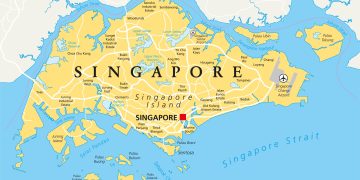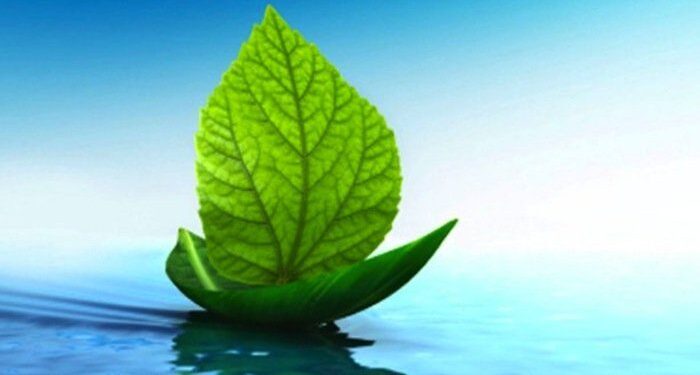During the last GREEN4SEA Conference, Mr. Christopher Fee, General Manager – Environment and Sustainability, Oldendorff Carriers presented experience feedback from the use of scrubbers so far. Specifically, Mr. Fee attempted to debunk the myth that these systems harm the environment.
This whole discussion about scrubbers can be summed up into one question:
Do open loop scrubbers have positive or negative net environmental impact taking into account both air emissions and water discharges?
It’s important to look at the facts. When you visit the World Health Organization’s website they stress the importance on air quality. 92% of the world‘s population lives in places where air quality levels exceed the WHO Ambient Air Quality Guidelines.
That includes my country, that includes this country.
1 in 8 premature deaths in the world are linked to air pollution, that calculates to 7 million deaths in 2012 and the situation does not seem to be getting much better. Vast improvements are being made but it all takes time. Even those countries that are within the WHO’s recommended guidelines still need to make more concerted efforts to bring air pollution to more sustainable levels.
The WHO “safe“ limit for fine particulate matter is 10μg/m3. Now, fine particular matter is the stuff you really want to get out of the air. This is the horrible stuff that finds its way into your lungs and your blood stream, causing all kinds of terrible illness and diseases.
Only 24 countries pass, the other 171 countries (representing 92% of the world‘s population) fail. This means that 7.1 billion people around the world are breathing in unsafe air.
How can scrubbers help?
Scrubbers can capture and remove…
- Up to 99% of Sulphur dioxide;
- Up to 94% of particulate matter;
- Up to 60% of black carbon;
- Significant amounts of PAH.
… from exhaust gases!
Sulphur Dioxide:
Chronic or long-term exposure to high levels of SO2 leads to breathing problems, respiratory illnesses and even heart disease.
On the environmental side, further oxidation of SO2 causes acid rain which harms the environment, particularly forests and lakes; as well as damaging infrastructure, such as buildings and monuments.
Particulate matter:
It is the sum of all solid and liquid particles suspended in the air, many of which are hazardous, which causes:
- Increased risk of respiratory diseases, such as asthma, bronchitis and flu.
- Increased risk of lung diseases, such as emphysema, chronic bronchitis and lung cancer.
- Increased risk of cardiovascular conditions, such as heart attacks and strokes.
- Increased risk of dermatological diseases and other cancers.
Black Carbon:
It has a negative impact on both human health and climate change. It is the sooty black material emitted from the exhaust gases of diesel engines, coal-fired power plants, and other sources that burn fossil fuels. It comprises a significant portion of particulate matter, which is an air pollutant.
Concerning human health impact, it’s estimated that up to 4.9 million premature human deaths could be prevented annually by utilizing available mitigation measures to reduce BC in the atmosphere.
On the climate change side, when BC deposits itself on ice and snow, the heat it absorbs increases the surface temperature, thereby increasing the rate of melting and ultimately results in rising sea levels.
PAHs (Polycylclic Aromatic Hydrocarbons):
These are organic compounds containing only carbon and hydrogen, found in coal and in tar deposits. They are also produced by the thermal decomposition of organic matter, such as in engines and incinerators or when biomass burns in forest fires.
We’ve also got serious concerns because they cause:
Cancers
- Lung
- Bladder
- Gastrointestinal
- Skin
Dermatological conditions
- Irritation
- Inflammation
- Allergic reaction
Other conditions
- Decreased immune function
- Cataracts
- Kidney damage
- Liver damage
- Breathing problems
The big question is does using MGO or VLSFO, the latter being what most shipowners will likely be using come 1st of January 2020, if their vessels don’t have scrubbers fitted or aren’t powered by LNG, generate cleaner air emissions than using HSFO with a scrubber? The answer to that is vessels running on HSFO with a scrubber fitted, generate cleaner air emissions than vessels running on LSFO or MGO.
A Clean Shipping Alliance 2020 member took samples, comparing the difference of the air emissions of a vessel operating on HSFO with a scrubber to that of a vessel operating on MGO without a scrubber. As you can see from the photos of these six samples, it is clear that scrubbers are removing the majority of the particulate matter and soot from the exhaust gases, while the vessel operating on MGO (an IMO 2020 compliant fuel) is emitting significantly more into the atmosphere.
What’s important to emphasize is that IMO have allowed it. It’s outlined in MARPOL ANNEX VI. It wasn’t a decision made over night by IMO; they consulted environment specialists and went through various PPR or MEPC meetings.
Scrubbers is not a new technology either, so we’re talking about a very mature technology that has been used in land-based applications for many years. A famous example is sea water scrubber fitted Mongstad Refinery in Norway.
The University of Bergen carried out a study of the before and after effects of a seawater scrubber fitted on this refinery and they found:
- No evidence of harmful impact on the marine bottom fauna at the seawater scrubber outlet;
- The bottom fauna was rich, with a moderate-to-high diversity and evenness in both sampling periods;
- The content in the sediment was within natural variations;
- The concentrations of all metals were within natural variations.
That was more than 20 years ago. Technology has improved a lot since then.
The technology is also mature in the maritime application. DFDS fitted a system back in July 2009, which not boasts in excess of 10,000 operating hours, with SOx emissions well below the strict legal requirement of 0.1% applicable to the European ECAs. In fact, I believe they’re getting their SOx emissions down to 0.07.
What about discharges into the sea?
The same team that conducted the survey on the Mongstad Refinery, confirmed that if the sulphur found naturally in the sea were spread out as an even layer, the total ocean area of the world would be covered by a 5-foot thick (1524 mm) layer of sulphur.
If all the sulphur in all the known oil and coal reserves were added to this layer, the thickness would only increase by the thickness of a sheet of paper (0.05mm).
Are there any reputable independent studies available supporting the use of scrubbers?
The one published in 2012 by the Danish Ministry of the Environment is a good reference.
The Japan Ministry of Land, Infrastructure and Tourism, provide very compelling evidence that scrubbers do not cause environmental damage, either in the short, or long term, also taking into consideration any accumulation effect. Scrubbers are already approved by the competent authorities in Australia, Canada, Chile, Colombia, Finland, India, Italy, Japan, Marshall Islands, Norway, Saudi Arabia , Trinidad & Tobago, UK and the UAE, many of which have granted written approvals. In this regard, the Clean Shipping Alliance 2020 is calling for the wider acceptance of scrubber technology.
Above text is an edited version of Mr. Christopher Fee’s presentation during the 2019 GREEN4SEA Conference.
View may view his presentation herebelow
https://www.youtube.com/watch?v=MNB6l1IeY8M&feature=youtu.be
The views presented hereabove are only those of the author and not necessarily those of SAFETY4SEA and are for information sharing and discussion purposes only.
 Christopher Fee, General Manager – Environment & Sustainability, Oldendorff
Christopher Fee, General Manager – Environment & Sustainability, Oldendorff
































































